Morning Fall from Boss Boyd on Vimeo.
Morning Fall
by Edward McGinty
Reminders on Riding Risk
Every so often, I post this video as a reminder, not just that riding brings with it risk, but more importantly, that risk is something every rider should, from time to time, think about.
A clear understanding of the risk involved when you head out on the road can help inform the skills developed and applied to a ride that will improve the odds that you’ll return safely. And if your family or significant other has concerns about your scooter or motorcycle you’ll be better equipped to discuss those concerns beyond, “I’m safe.”
Beliefs
I believe there are no universal standards regarding risk or how a rider addresses it. With so many variables in play managing risk is a personalized operation. I’ll share my approach. Others may weigh in on how, or if, they spend time in this arena.
Personal Risk Assessment Checklist
I have five areas of consideration on my own riding risk checklist. They involve both objective and subjective assessments and they are dynamic in that they change as I and the world changes.
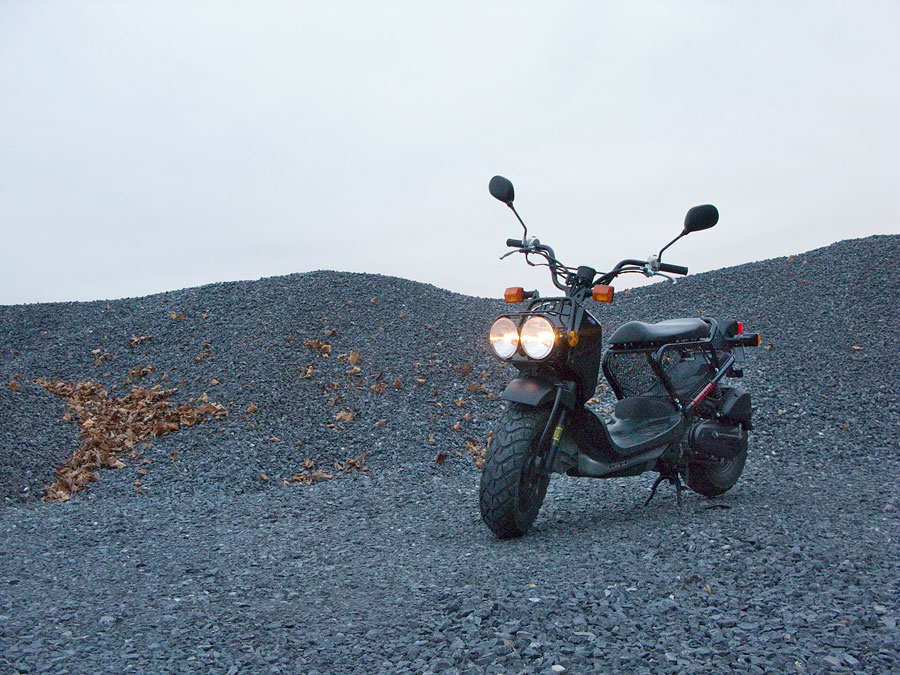 Machine — every motorcycle and scooter is different and provide their own palette of performance and capability. I try and imagine the limitations they present and factor those into decisions about a ride. A 50cc Honda Ruckus scooter will dictate routes differently than a BMW R1200 RT. I don’t want the machine to put me in trouble.
Machine — every motorcycle and scooter is different and provide their own palette of performance and capability. I try and imagine the limitations they present and factor those into decisions about a ride. A 50cc Honda Ruckus scooter will dictate routes differently than a BMW R1200 RT. I don’t want the machine to put me in trouble.
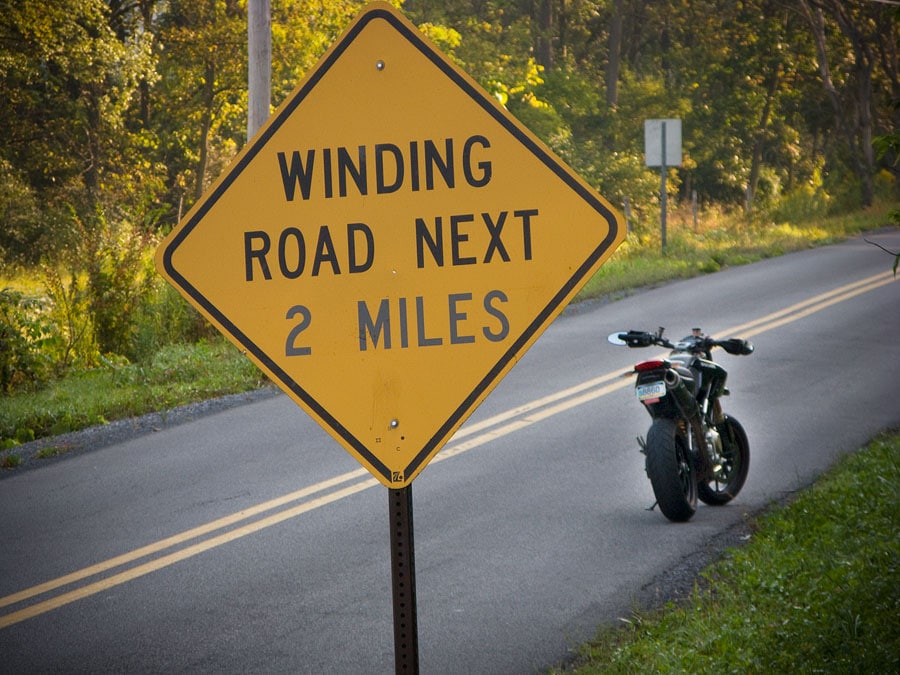 Skill — I consider skill a mechanical skill that can be learned and acquired at some level. What those skills are and at what level they can be performed is a difficult assessment. With egos at work it’s easy to overestimate skill and underestimate the profound effect that a less than honest appraisal can have. I like to think about cameras when I think about skill. A person can master every button and menu item on a complex camera, can perform exquisite exposures, tack sharp focus and follow every compositional “rule” yet still make terrible photographs. Skill involves being able to apply and perform on the road. It does take long to look at crash reports to realize how many accidents are self-inflicted — riding too fast to negotiate a turn or be able to stop fast enough to avoid an obstacle. These are skill based problems than can be effectively managed. In my opinion.
Skill — I consider skill a mechanical skill that can be learned and acquired at some level. What those skills are and at what level they can be performed is a difficult assessment. With egos at work it’s easy to overestimate skill and underestimate the profound effect that a less than honest appraisal can have. I like to think about cameras when I think about skill. A person can master every button and menu item on a complex camera, can perform exquisite exposures, tack sharp focus and follow every compositional “rule” yet still make terrible photographs. Skill involves being able to apply and perform on the road. It does take long to look at crash reports to realize how many accidents are self-inflicted — riding too fast to negotiate a turn or be able to stop fast enough to avoid an obstacle. These are skill based problems than can be effectively managed. In my opinion.
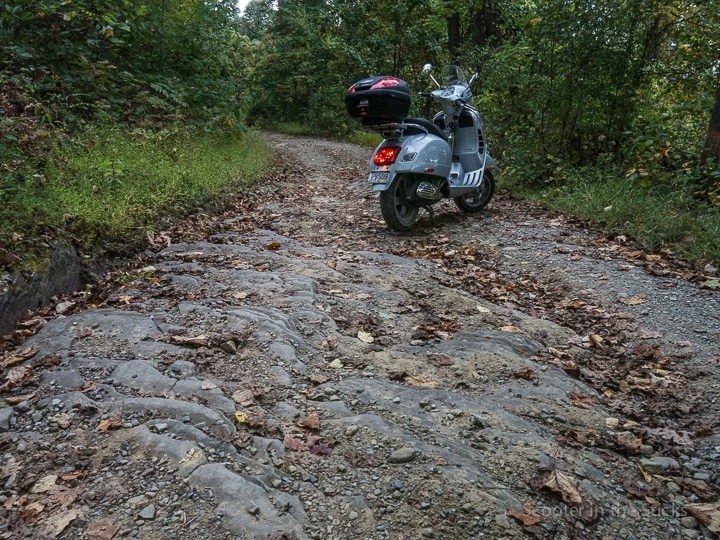 Experience — this is the all important mix of everything a rider knows, can do, believes and has first hand experience performing swirls together into the critical mass known as experience. Experience varies wildly among riders from those Sunday afternoon tourers who seldom do more than start, stop and ride in a straight line to those who rocket through the world and often find one or two wheels off the ground. If you’re faced with riding through a light snow as the sun going down you’ll need to make an assessment of your experience as you decide whether to ride on or call your friend with a trailer. It’s easy to take on a big bite of risk without knowing it. An honest appraisal of experience will help manage things.
Experience — this is the all important mix of everything a rider knows, can do, believes and has first hand experience performing swirls together into the critical mass known as experience. Experience varies wildly among riders from those Sunday afternoon tourers who seldom do more than start, stop and ride in a straight line to those who rocket through the world and often find one or two wheels off the ground. If you’re faced with riding through a light snow as the sun going down you’ll need to make an assessment of your experience as you decide whether to ride on or call your friend with a trailer. It’s easy to take on a big bite of risk without knowing it. An honest appraisal of experience will help manage things.
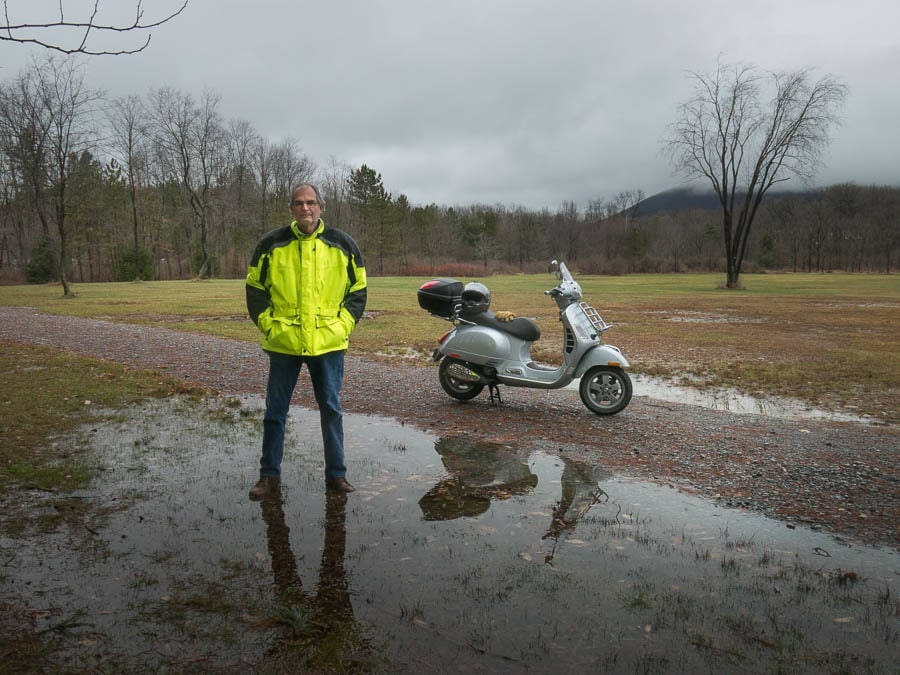 Body and Mind — I’m not as strong and flexible as I was 10 years ago. My night vision isn’t as good either. I know what a challenge it is to ride with a headache or if I’m angry, frustrated or annoyed with people or the world. There are days when I am certain I could lift a downed Honda Goldwing and others when I’m concerned my Vespa GTS 250 is kind of heavy. Each time I get on a scooter or motorcycle I ask myself, “How do you feel?” Having my body ready and mind focused is critical to doing a good job managing risk.
Body and Mind — I’m not as strong and flexible as I was 10 years ago. My night vision isn’t as good either. I know what a challenge it is to ride with a headache or if I’m angry, frustrated or annoyed with people or the world. There are days when I am certain I could lift a downed Honda Goldwing and others when I’m concerned my Vespa GTS 250 is kind of heavy. Each time I get on a scooter or motorcycle I ask myself, “How do you feel?” Having my body ready and mind focused is critical to doing a good job managing risk.
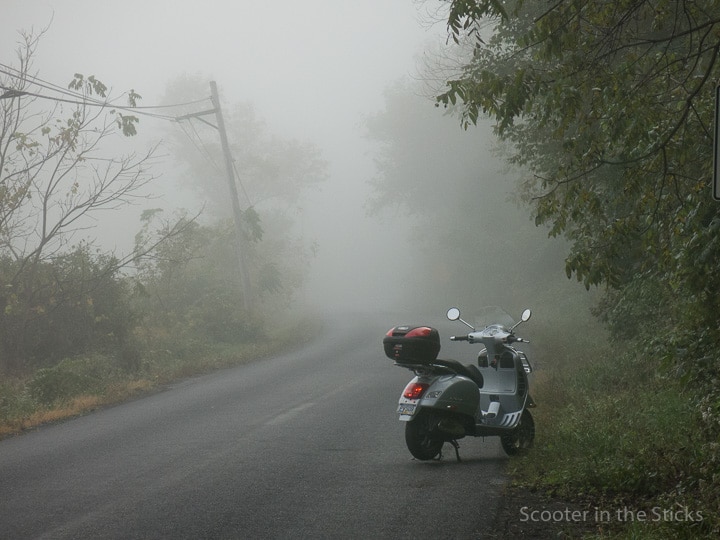 Riding Environment — I live in an area with an abundance of lightly traveled secondary roads. Heavy traffic means waiting two extra changes at a traffic light because there’s a massive collection of 50 cars. That world is entirely different from an urban commuter who’s feeling the pressure of vehicles in the rear view mirror pushing to ride 20mph over the speed limit. Knowing where you’ll be riding is a critical component of managing risk. And don’t forget weather and time of day. Rain, snow, wind, extreme cold or heat, all of these affect potential risk. And command a decision.
Riding Environment — I live in an area with an abundance of lightly traveled secondary roads. Heavy traffic means waiting two extra changes at a traffic light because there’s a massive collection of 50 cars. That world is entirely different from an urban commuter who’s feeling the pressure of vehicles in the rear view mirror pushing to ride 20mph over the speed limit. Knowing where you’ll be riding is a critical component of managing risk. And don’t forget weather and time of day. Rain, snow, wind, extreme cold or heat, all of these affect potential risk. And command a decision.
Odds and Ends
That kind of wraps things up for my checklist regarding riding risk. I do have some things that I consider a given. Things like don’t drink and ride, wear a helmet, ride defensively, etc. Last year’s post with the Morning Fall video outlines some of those.
And last, and I shouldn’t have to even bring this up I suppose, are those life management things like a will, insurance, and a plan if something should happen. Many don’t like to think of this stuff and consider it a downer and would rather just be left alone to enjoy the ride. That’s fine and each of us is entitled to choose our own path. But if you want to manage the risk that does exist, if you want to have your family feel better about your time on the road, then you may want to think about some of this.
Or not.
I often try, not very successfully, to relay the theory of managing risks to people that ask about riding a scooter across American or around the world. Your post very nicely explains that and will be part of that discussion in the future. I have never been able to get on and go ride without first running through all the checklists and reminders of what risks are out there in front of me and the risks that I personally carry with me. As I age, I find the procedure more and more important and that I am more likely to miss something. So, no matter the ride, I try to cover the same things in my mind every time hoping to re-enforce the habit pattern.
The video reminds me of why a bought a Spot Tracker. It is not so much for the tracking but for the little SOS button that alerts Spot via satellite, not cellphone, that I am in trouble. My worry is will I remember it is there if I ever need it.
I sometimes think discussions of risk are like talking about religion or politics. People have their mind made up and it’s pointless to engage. The only exception may be new or potential riders who haven’t been conditioned by others or themselves.
Aging does change things. I find more and more that I need checklists. I seem to forget more now. There’s no muscle memory in some of the things necessary to manage risk. The checklist helps.
I’ve not purchased a Spot Tracker yet — a stupid decision on my part — because I just overlook it. I ride by myself enough in places without cell coverage that it makes a lot of sense. Add the heart attack two years ago and some might say I’m being stupid. I am going to add that to my to do list. Thanks for planting the idea.
The video still seems jarring to me every time I watch it. Apart from the smoking, it’s something entirely possible in my riding life.
I have found “risk” pertaining to riding motorized two-wheelers to be a very touchy subject among riders. Some riders become downright hateful if my perception of risk is not in complete alignment with theirs. That amazes me, although I guess it shouldn’t.
I live very close to South Carolina, which has no helmet laws. While driving through SC today, I saw numerous riders not wearing helmets. Some are angered at the sight of helmetless riders. Not me. That’s their business if they don’t want to wear a helmet.
When legislation was offered up in SC requiring helmets, the uproar against it shot it down.
I know several other riders who wear every protective item of gear they can obtain, including Helite Air Vests, back braces, etc. Some of them are obviously in denial. They believe their gear will save them from any serious injury regardless of the crash, and that anyone who doesn’t wear all the gear is a bona-fide idiot, and if I don’t agree with them they get angry.
Riders are a unique breed…
There’s certainly a gap in perception among riders regarding risk — especially around helmets and gear — the battle between those embracing the fashion style of the cruiser community versus those who firmly believe ATGATT is the only road to the promised land. The notion of risk versus freedom of choice can be at odds when talking about management. It’s a conversation I seldom engage. I shudder a bit when I see someone riding without a helmet but don’t feel any compulsion to say anything about it save for the times I climb on my soapbox here.
Gear may help minimize some injuries but nothing will save a rider from a blunt force impact. I look at the gear I wear mostly as a way to not immediately have my flesh torn off my body as it slides along pavement. Haven’t had anyone get angry at me yet about not agreeing with them. I tend to approach those inquiries with, “Hey, look over there, is that a Norton motorcycle?”
Steve, thanks for the reminder that we are fragile creatures and anything can happen, when we least expect it.
My wife Kathy and I just returned from a 377 mile week-long Vespa Vacation. We rode back-roads almost all the way with the exception of 2 miles on U.S. 101.
I am constantly reminded of the precious cargo on the back of Hi-Ho-Silver and this realization has kept me well within my limits of skill and safety.
My brother, a much more experienced motorcycle driver, moto-cross racer and trials rider sagely gave me this advise when I picked up Silver in 2011, he said: “Treat everyone on the road like they’re out to get you!”. And I have followed his wisdom, and sometimes, they are (out to get me), but mostly, they just love our little silver scooter that gets an amazing 75 mpg with two of us onboard with too much luggage and an irresistable attraction to 2-wheeled magic!
I think it’s important to understand that before getting on a motorcycle. Helps a person make informed decisions.s
Your trip sounds great. Nearly four hundred miles of backroads on a Vespa is a great vacation.
There are lots of reasons to stay within our riding limits — the precious cargo on the back is a strong reminder. I’ve seen enough examples though of where it doesn’t seem to matter — helmet-less young women on the back of a sportbike in short pants and flip flops screaming down the highway.
Your brother’s advice is an excellent way to think about the road.
Keep riding for the magic!
Hey, Steve,
Nice to dip in, catcjyour voice on the page and enjoy your pictures. Best to you, and good ridin’
Thanks for stopping by John. I owe you a letter!
Heady subject, as a motorcycle instructor we talk risk mitigation with students from the moment they enter the classroom & practical parking-lot sessions. My personal philosophy is ATGATT & I role model that behaviour. I also talk about the importance of continued education, when it comes to riding we are all students of the road no matter what skill level, there is always room to grow, I say this as someone who has only been riding for a relatively short period of time. My growth has been steep going from a 50cc scooter with no motorcycle license in summer of 2011, to taking motorcycle courses in the Fall of 2011 and then 3 years later becoming an Motorcycle instructor in 2015. I work hard at skill-set building and have deeply committed myself to the educational/practical part of riding, by practicing routinely and taking skill building courses. I will always be in one learning phase or another, there is an art to riding well & you have to nuture it for it to grow & not stagnate.
Beyond skill there are other things involved in risk management such as wearing all the gear, picking the the right bike, and being realistic about your skill-set. New riders need to hone their skills with a manageable bike, its unfortunate when I see newbs go out & buy these huge cc bikes, way too much power for a fledgling rider. In North America we have an unfortunate mindset that high cc’d bikes speaks to skill & ability, and it is generally not the case, riders get overtaken by ego, skill or lack thereof and speed, which has long lasting repercussions. Then there is the physical aspect of riding, it is exhausting manhandling a huge heavy bike which gets compounded by lack of skills. Same goes for older riders, there is nothing wrong with getting rid of a ginormous bike and getting something lighter, sometimes at this stage ego is just as big as a newbs.
The emotional component is huge when riding, if your head isn’t in the game don’t ride, same goes if you’re sick.
Then there is the discussion with the loved ones, everything you do on the bike has a ripple effect, they may not be sitting on your bike with you, but they are the ones who deal with the end result. My family knows I will take every precaution by wearing full gear, not ride if I am not emotionally or physically capable. I practice my roadcraft and comit to ongoing education, & obey traffic laws.
I also carry emergency medical/contact info on a card in 3 places on me & the bike, 1 in my jacket, 1 in my riding pants pocket and 1 on the bike with my insurance and this is backed up with the electronic I.C.E. version on my phone. I know it seems like overkill, but in an emergency when they start cutting gear off I want to make sure they find my medical/contact info. I’m looking at getting a road id bracelet on a wristband to compact this part.
Risk and the mitigiation of it on a bike is huge and as a rider it is up to us to do everything we can, but sometimes a scooterist/motorcyclist can do it all right and things still go sideways. Its not a perfect world out on the road, but if you think & make good choices, you will up your odds of safely returning home.
(Sorry about the length of my response, but I’ve spent the long weekend immersed in teaching so its all fresh)
An accomplished American motorcyce road racer….world champion type….MOTOGP….died today from injuries….suffered when hit by a car in Italy while on a physical training ride…ON A BICYCLE….God speed Nicky…35 yrs old.
Very timely. I rode close to 400 miles in the rain, cold, and wind on Friday. It rained most of the way there and 90% of the way back. I could have taken my car. I would have been bored out of my mind if I had. Even in challenging weather I feel more alert on two wheels. But once home, I thought of a lot of things associated with risk. The next day I retook the MSF risk assessment test and wasn’t surprised that I’m a fairly low risk taker with good skills–whatever that means. Somehow “low risk taker” and motorcycle riding seem rather oxymoronic. In any case, the ride, and this video have made me think about not just my risk taking behavior but that of others, like the ones I passed on the road texting while driving, or eating food while driving, or grooming. Even if I remain conscious of all the things among your great reminders, there shall always be things and other people’s behavior, which I cannot control–that is, the risk levels of others. This is a reminder to me that I will never have total control and that I should stop behaving/thinking that I do. Just rambling here…the video was gut-wrenching. Thanks for the reality check.
Nice piece. I suspect as we get older we tend to get more realistic about discussing risks objectively. When starting to ride (about 5 years ago) I had a long discussion with my wife addressing her concerns. MSF helped get a realistic appraisal for myself. I do what I can to cover my end of things-gear, situational awareness, etc. There’s always the other guy, and that’s what keeps my attention when riding.
Understandably, riding is risky, but then again so is driving, cleaning my gutters, and the occasional trip up the ladder with a chainsaw (I know, I know). Each involves a choice, and hopefully careful execution.
It’s not enough to save me by itself, but I have a “two strikes” rule: If I slept badly, that’s a strike, bad mood, rain, strikes, etc, etc. Sometimes it’s a bit painful to leave the scooter home, but ultimately I know I’m safer. I’ll accept the risk of one factor, but that’s my limit.
This is a very comprehensive exploration of the risks of riding, be it a little Honda Ruckus or a big motorcycle out on the road. If it gets anyone to THINK before they ride, then you may have spare a life or at the very least serious injury. Well done.
I’ve been riding little scooters for ten years, mostly in the rural areas. I moved back to the burbs (not by choice) five years ago and I still head eastward to ride in the rural areas.
Recently my riding pattern has changed and now I only ride to the grocery store or on short rides out into the local countryside.
I have cut back on the frequency and duration of rides and now focus more on riding bicycles on a local rail trail system away from traffic completely. The scoot still brings joy, but the use of it now is very selective.
Why? Because now I am a 24/7 caregiver for my disabled partner and I absolutely will not risk anything happening to me. Also, oftentimes I am physically or emotionally tired or distracted, know it, and won’t touch the scooter.
I thought of giving up scooter riding completely, but decided to stick with the small ones and ride it like a bicycle. The way I started out riding ten years ago.
People need to think seriously about what they are doing when they throw a leg over. Your article sifts down to the basic need for self-awareness and calculation of risk that most people don’t think of when they set out. The checklist is comprehensive and very helpful. Thank you~
Thank you for the kind words about this post on risk. It’s a subject that I try and keep near the surface each time I go for a ride. A lofty goal that I can’t alway meet. But I’m working on it.
Your comment about cutting back on the frequency and duration of riding due to responsibilities at home. I understand that. I think it’s something many with dependents at home struggle with. It raises all sorts of difficult questions.
Be safe on your bicycle and scooter. I’ve looked at my bicycle and wondered about it’s safety. Reading of poor Nicky Hayden’s untimely death on his bicycle left me wondering if there’s anything safe…
Regarding: “My brother, a much more experienced motorcycle driver, moto-cross racer and trials rider sagely gave me this advise when I picked up Silver in 2011, he said: “Treat everyone on the road like they’re out to get you!”. ”
I’ve heard this saying a number of times, and I think it’s not positive at all. If someone forms a mental image that everyone on the road is there to get him/her, the rider may attract exactly that; and even if the rider doesn’t attract it, this kind of thinking creates a stress in his/her body/nervous system. I think riding with awareness and common sense is better.
Perhaps the “everyone is out to get you” is just an exaggeration hoping to keep a person focused on the potential risk. I know people aren’t out there saying to themselves, “Wonder if I can knock off a scooter on the way to work today?” but I do know that distraction or error could accomplish it with no ill will. So is the riding approach really any different? Like you say — awareness and common sense — that’s the ticket.
And don’t drink. Not even one drink. The data shows a strong connection between alcohol and crashes in the moto world. That alone goes a long way in reducing rish…
Yeah, plus infinity on not drinking even one drink.
BTW, when you explore all the side roads, you must be exposed to the risk/challenge of road debris more than most other riders. Watching for
rocks, pieces of wood, potholes, ridges, cracks, unexpected slippery sections, etc while riding and trying to observe nature…
Doing that on a machine with 12″ wheels and suspension not really meant for “offroading” must be double suspenseful, no?